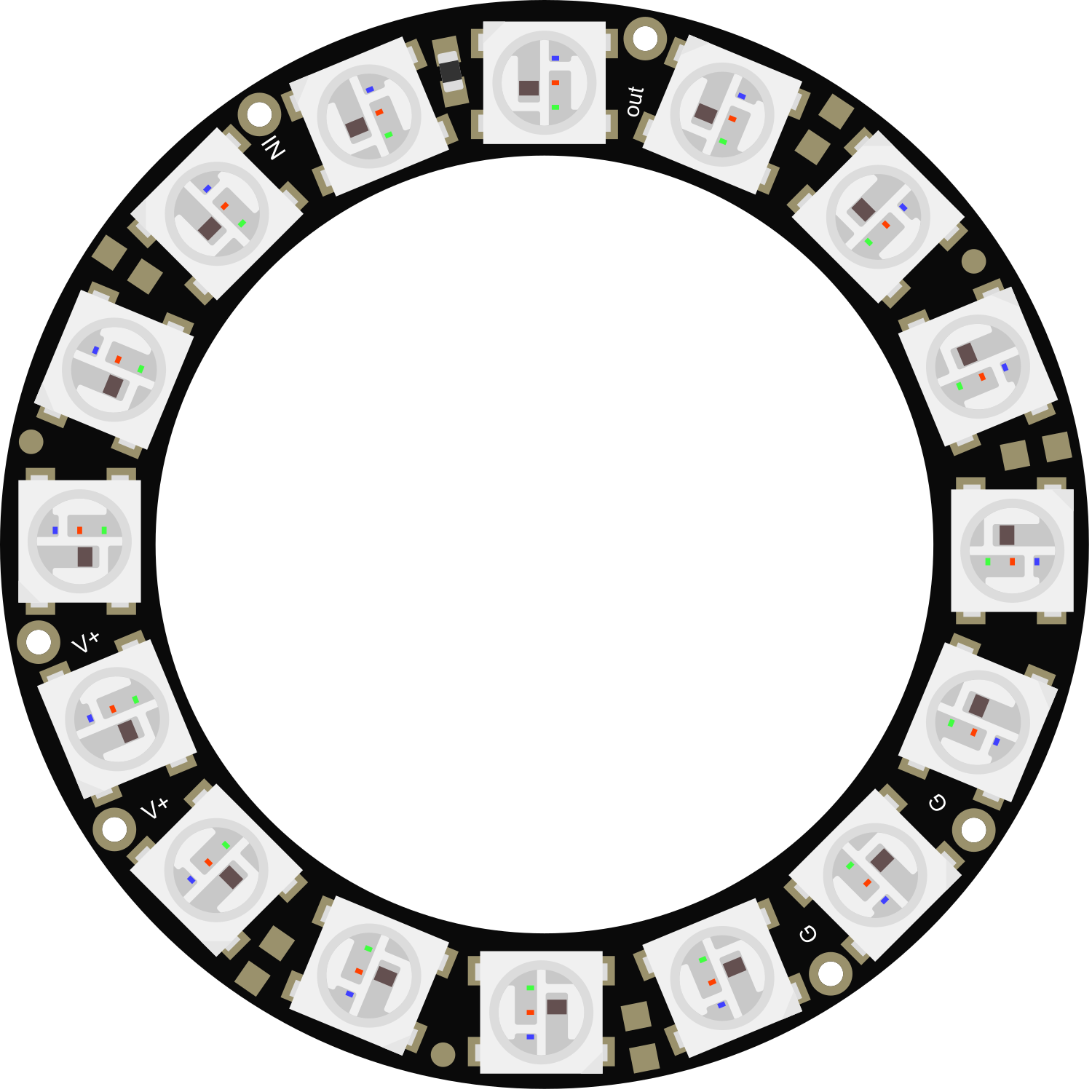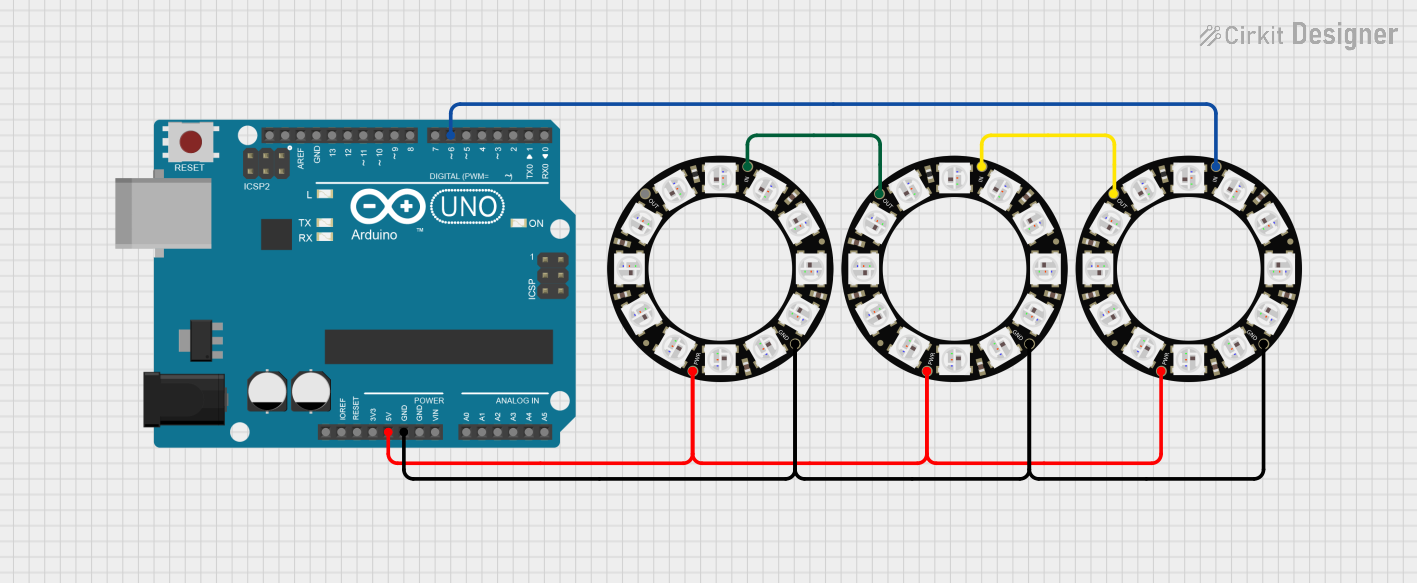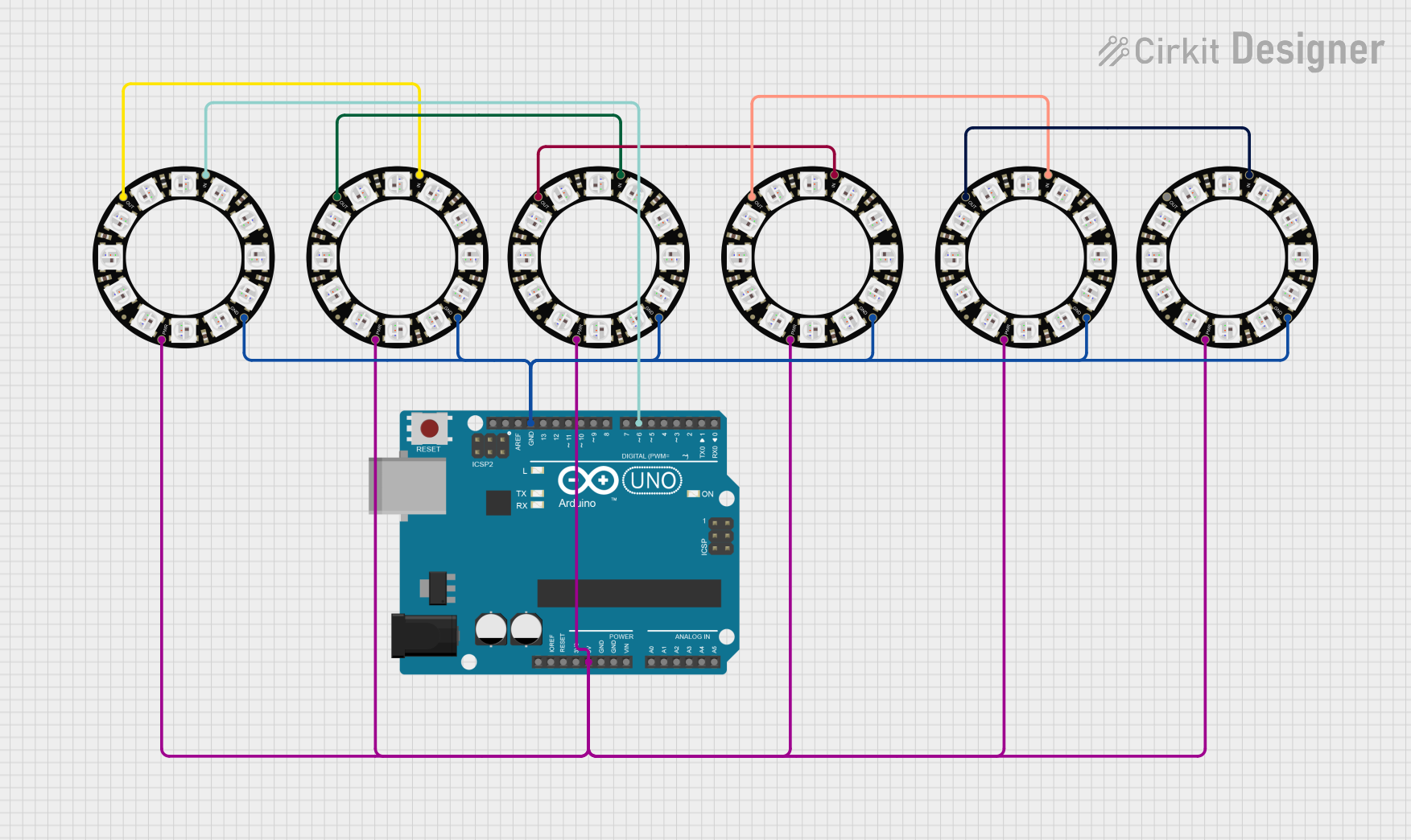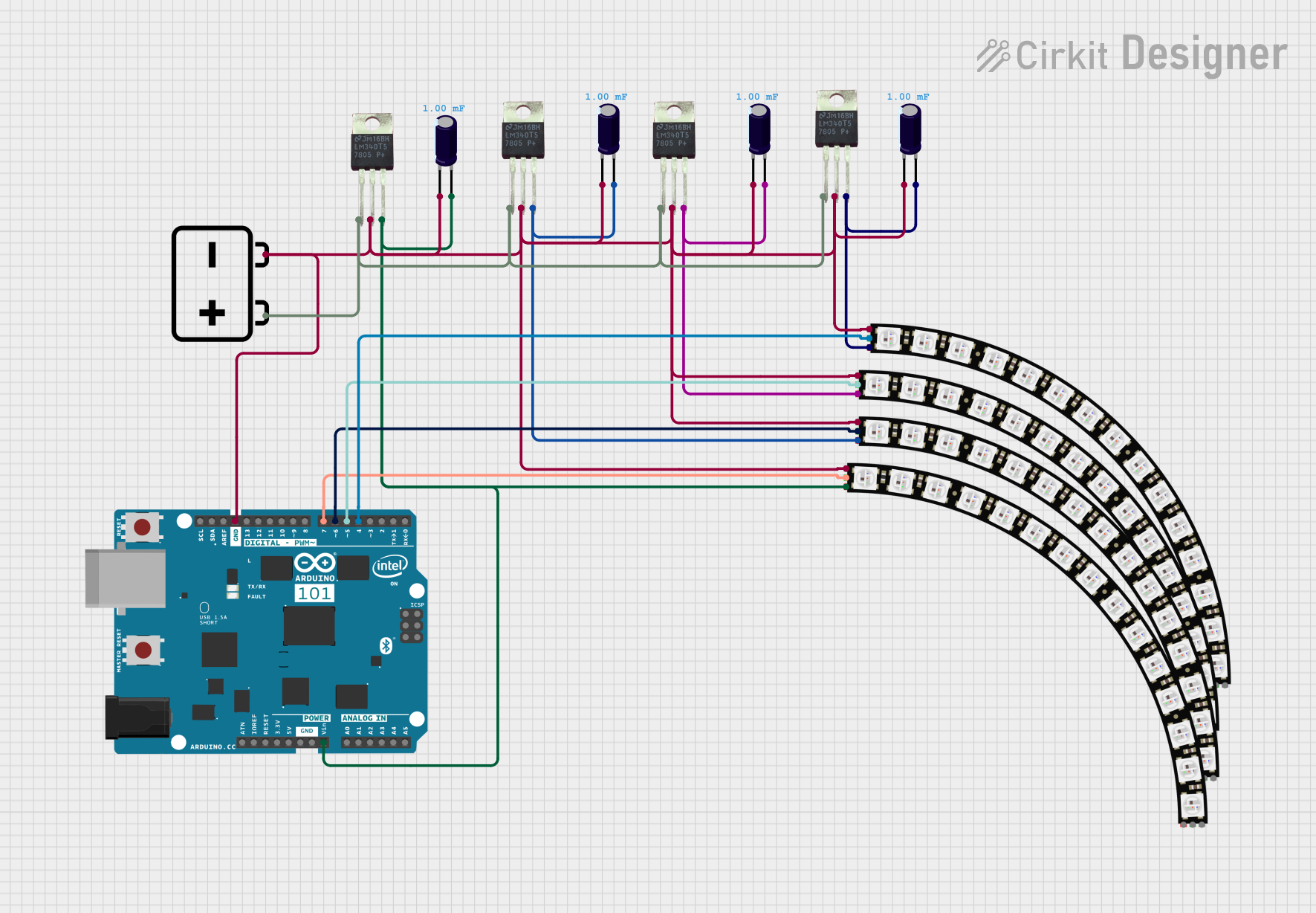
How to Use Adafruit 16 NeoPixel Ring: Examples, Pinouts, and Specs

 Design with Adafruit 16 NeoPixel Ring in Cirkit Designer
Design with Adafruit 16 NeoPixel Ring in Cirkit DesignerIntroduction
The Adafruit 16 NeoPixel Ring is a versatile and vibrant lighting solution that consists of a circular array of 16 individually addressable RGB LEDs. Each LED on the ring can be controlled independently, allowing for a wide range of color and brightness combinations. This component is widely used in wearable technology, decorative lighting, and interactive projects that require visual feedback.
Explore Projects Built with Adafruit 16 NeoPixel Ring

 Open Project in Cirkit Designer
Open Project in Cirkit Designer
 Open Project in Cirkit Designer
Open Project in Cirkit Designer
 Open Project in Cirkit Designer
Open Project in Cirkit Designer
 Open Project in Cirkit Designer
Open Project in Cirkit DesignerExplore Projects Built with Adafruit 16 NeoPixel Ring

 Open Project in Cirkit Designer
Open Project in Cirkit Designer
 Open Project in Cirkit Designer
Open Project in Cirkit Designer
 Open Project in Cirkit Designer
Open Project in Cirkit Designer
 Open Project in Cirkit Designer
Open Project in Cirkit DesignerCommon Applications and Use Cases
- Wearable electronics and fashion accessories
- Decorative lighting and art installations
- Indicators and notifications for devices
- Interactive displays and games
Technical Specifications
Key Technical Details
- Operating Voltage: 5V DC
- Max Current per LED: 60mA (with all LEDs at full brightness)
- Max Power Consumption: ~960mA (entire ring with all LEDs at full brightness)
- LED Type: WS2812 or equivalent integrated RGB LEDs
- Communication Protocol: Single-wire digital control interface
Pin Configuration and Descriptions
| Pin Number | Name | Description |
|---|---|---|
| 1 | VDD | Power supply (5V DC) |
| 2 | GND | Ground connection |
| 3 | DIN | Digital input signal |
| 4 | DOUT | Digital output signal (for chaining multiple rings) |
Usage Instructions
How to Use the Component in a Circuit
- Connect the VDD pin to a 5V power supply.
- Connect the GND pin to the ground of the power supply.
- Connect the DIN pin to a digital output pin on a microcontroller, such as an Arduino UNO.
- (Optional) If chaining multiple NeoPixel rings, connect the DOUT pin of the first ring to the DIN pin of the next.
Important Considerations and Best Practices
- Always use a current-limiting resistor (typically 300-500 ohms) on the DIN pin to prevent potential damage to the first LED.
- Include a large capacitor (1000µF, 6.3V or higher) across the power supply terminals to smooth out power supply fluctuations.
- Ensure that the power supply can handle the maximum current draw when all LEDs are at full brightness.
- Avoid powering the NeoPixel Ring directly from the Arduino's 5V pin if all LEDs will be used at high brightness levels.
- Use a separate power supply for larger installations or when chaining multiple rings.
Example Arduino Code
#include <Adafruit_NeoPixel.h>
#define PIN 6 // Define the digital I/O pin for the data signal
#define NUMPIXELS 16 // Number of NeoPixels in the ring
// Initialize the NeoPixel ring
Adafruit_NeoPixel pixels(NUMPIXELS, PIN, NEO_GRB + NEO_KHZ800);
void setup() {
pixels.begin(); // Initialize the NeoPixel library
}
void loop() {
for(int i=0; i<NUMPIXELS; i++) {
pixels.setPixelColor(i, pixels.Color(255,0,0)); // Set the pixel to red
pixels.show(); // Update the ring with the new color
delay(50);
pixels.setPixelColor(i, pixels.Color(0,0,0)); // Turn off the pixel
}
}
Troubleshooting and FAQs
Common Issues Users Might Face
- LEDs not lighting up: Check connections, ensure the power supply is 5V, and the current-limiting resistor is in place.
- Incorrect colors displayed: Verify that the data signal is correctly connected and that the NeoPixel library is properly initialized in the code.
- Flickering LEDs: This can be due to power supply issues. Ensure the power supply is stable and the capacitor is in place.
Solutions and Tips for Troubleshooting
- Double-check wiring, especially the ground connection between the NeoPixel Ring and the microcontroller.
- Use a multimeter to verify the voltage levels at the VDD and GND pins.
- Ensure that the Arduino library for NeoPixel is up to date and correctly included in your project.
- Reduce the brightness of the LEDs in your code to lower the overall current draw.
FAQs
Q: Can I power the NeoPixel Ring directly from the Arduino? A: It is possible for small-scale testing with low brightness, but for full brightness or multiple rings, use an external power supply.
Q: How many NeoPixel Rings can I chain together? A: This depends on the power supply capacity and the microcontroller's memory for storing the LED states. Ensure that the total current does not exceed the power supply's limit.
Q: Can I cut the NeoPixel Ring if I need fewer LEDs? A: No, the NeoPixel Ring is designed as a closed loop and should not be cut. Use individual NeoPixel LEDs if a custom arrangement is required.